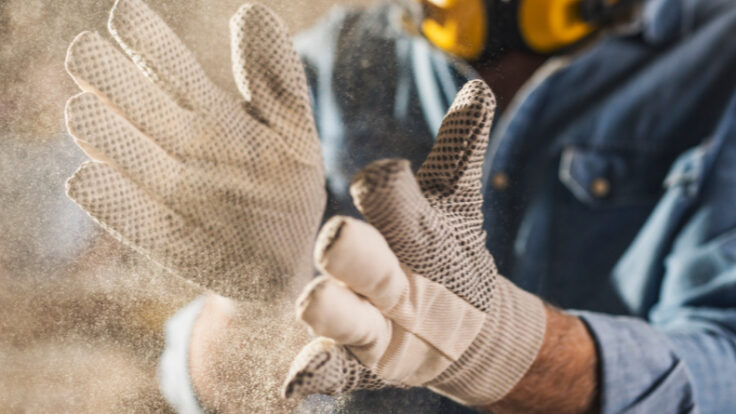About
About the Alliance
News and Events
Membership
Membership Types
Member Highlights
Services
Safety Assessments + Consultations
Advisor Services
Leadership and Psychological Safety Services
Training
CATALOG AND UPCOMING CLASSES
Resources
By Type
OHS Competency Tools and Framework
COR / OSSE
Getting Certified
Certification Tools & Training
Recognition & Awards
Navigation
Member Highlights:
Safety Assessments + Consultations: Air Quality Assessment, Combustible Dust Assessment, Confined Spaces Assessment, Critical Incident Response Services, Ergonomics, Machine Safeguarding Assessment, Noise Hazards | Surveys and Testing Services
Advisor Services: Safety Needs Analysis | GAP Analysis, Safety Program Support (SPS) | Safety Compliance Support (SCS)
Leadership and Psychological Safety Services: Mental Health and Wellness at Work, Leadership Training and Coaching, Respectful Workplace Support
By Type: Checklists, Guidebooks, Presentations, Quick Reference Cards, Safety Awareness Posters, Safety Videos, Templates, Toolbox Talks, Webinars
OHS Competency Tools and Framework:
Getting Certified: Steps to OSSE Certification, COR for Small Business, Safety Needs Analysis | GAP Analysis, COR / OSSE Small Business Referral Program, Certified OSSE/COR External Auditors
Certification Tools & Training: OSSE/COR Audit Tools, OSSE/COR Reference Materials, Certified OSSE External Auditor Training, OSSE/COR Internal Auditor Training
12
Months
of Safety
of Safety
June 2023
Combustible Dust
Combustible dust is a fine material that, when mixed with air and in the right concentration, has the ability to catch fire and explode. Many materials are combustible including grains, flour, sugar, cornstarch, wood, and metals. Even materials that do not burn in larger pieces (such as aluminum or iron), given the proper conditions, can ignite.
Accurately identifying, assessing, and controlling combustible dust is an essential part of an occupational health and safety (OHS) program. If your environment includes risks for combustible dust, ensure that you have a plan in place to control those risks including:
- Documentation of the risk identification and assessment
- Elimination or substitution of the hazard
- Engineering controls and processes to reduce the exposure risk
- Training and supervision of all workers at risk for dust exposure.
Dust Hazard Analysis
2-Day Certificate Training
Get ahead of the expected regulatory changes for combustible dust in B.C. for your industry.
Save Your Seat
Basic Training
A hazard identification and control program is a systematic approach to identifying and analyzing workplace hazards in an effort to mitigate risk of injuries and occupational disease. This course will provide employees, managers, supervisors and JHSCs working in BC’s manufacturing industry with tools and a basic understanding of hazard recognition, risk assessments, and control methods.
Written for contractors – this online course discusses key principles and concepts for recognizing the hazards, unsafe conditions and preventive actions associated with combustible dust. Combustible dust is found in many manufacturing settings and can lead to rapidly spreading fires and even explosions.
Course
This online awareness course will provide participants with the key principles and concepts for recognizing the hazards, unsafe conditions and preventive actions associated with combustible dust. Accurately identifying, assessing, and controlling combustible dust is an essential part of an occupational health and safety (OHS) program. Employees, contractors, or managers/supervisors with combustible dust in their workplace will be better prepared to control combustible dust hazards, develop safe work procedures, and prevent incidents and injuries.
Dust found in manufacturing can be combustible. When fine dust particles catch fire in the air – the fire can spread quickly and even lead to an explosion. This online awareness course will provide you with the key principles and concepts for recognizing the hazards, unsafe conditions and preventive actions associated with combustible dust.
Course
In this comprehensive, two-day course, learn to complete a Dust Hazard Analysis for your organization to meet the requirements of the NFPA standard and the updated B.C. Combustible Dust regulation. Register now for the next dates: September 8-9, 2025 at the Anvil Centre in New Westminster, BC.
Combustible Dust Resources and Tools
Toolbox Talk
Combustible dust is a solid material composed of distinct particles or pieces which present a fire hazard when suspended in air or some other oxidizing medium over a range of concentrations.
Service
Combustible Dust Combustible dust is a fine material that, when mixed with air and in the right concentration, has the ability to catch fire and explode. Many materials are combustible including grains, flour, sugar cornstarch, wood and metals. Even materials that do not burn in larger pieces (such as aluminum or iron), given the proper […]
Conference Session
If your operations create dust, the new WorkSafeBC updates to combustible regulations could impact you. Dust from many materials can catch fire and explode—including grains, flour, sugar, cornstarch, wood, metals, textiles, and plastics. Given the proper conditions, dust even from materials that do not burn in other forms (i.e. aluminum or iron) can ignite. The changes to […]
Guidebook
The Manufacturing Safety Alliance of BC is proud to introduce the Combustible Dust Prevention Guide, a source of guidance to an organization in implementing an combustible dust program at their workplace.
This presentation was shared by Rodney Scollard and Mike Tasker from WorkSafeBC through a webinar on updates to OHS Regulations for combustible dust on July 25, 2024.
safetyalliancebc.ca
Combustible Dust & Materials | What is it? The Occupational Safety and Health Administration has published a list of products known to produce combustible dust. There may be others. Do you make or handle any of these products that may create dust or powders? Agricultural Products | Agricultural Dusts | Carbonaceous Dust | Chemical Dust […]
This resource is helpful to understand some of key changes that will impact manufacturers and food processors around building their own combustible dust management programs.
Conference Session
2025-10-08 08:00:00
In this 2-day certificate session, learn to complete a Dust Hazard Analysis for your organization to meet the requirements of the NFPA standards and to help prepare for the anticipated updates to the OHS Regulation for B.C. businesses that handle or generate potentially combustible dusts. We are offering this updated training at the Anvil […]
Registration OpenConference Session
2025-10-09 08:00:00
In this 2-day certificate session, learn to complete a Dust Hazard Analysis for your organization to meet the requirements of the NFPA standards and to help prepare for the anticipated updates to the OHS Regulation for B.C. businesses that handle or generate potentially combustible dusts. We are offering this updated training at the Anvil […]
Registration OpenConference Session
In this 2-day certificate session, learn to complete a Dust Hazard Analysis for your organization to meet the requirements of the NFPA standards and to help prepare for the anticipated updates to the OHS Regulation for B.C. businesses that handle or generate potentially combustible dusts. We are offering this updated training in Kelowna to address […]
About MSABC
Board & Governance
Contact Us


